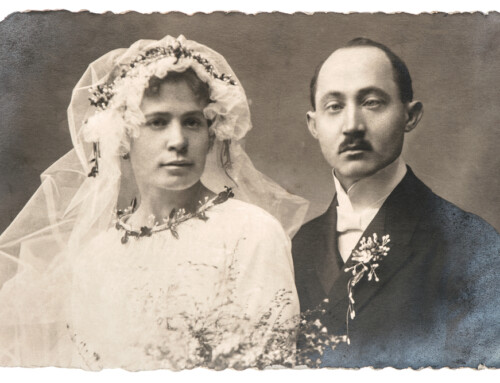 When a relationship between single parents with children becomes serious to the point that they want to move in together, the couple faces the challenge of blending their two families into one. There can be many bumps in the road on the way to a combined household. Discussing and identifying those potential bumps early can make for a smoother ride, and mediation, here again, can be a helpful process. Unfortunately, our couple did not follow this road at the outset and almost lost their way.
When a relationship between single parents with children becomes serious to the point that they want to move in together, the couple faces the challenge of blending their two families into one. There can be many bumps in the road on the way to a combined household. Discussing and identifying those potential bumps early can make for a smoother ride, and mediation, here again, can be a helpful process. Unfortunately, our couple did not follow this road at the outset and almost lost their way.
Julie was a divorcee who had sole custody of her two children. Her ex-husband, the father of her children had moved overseas and saw the children for extended periods of time during school vacations. Paul was a widower, working and raising his four children as a single parent. Paul and Julie had been dating for a while and they were planning to marry.
Both parents and the six children were very excited about the new life and adventure that they were about to embark upon. Julie and Paul decided to start anew, each selling their former house and purchasing a larger house to accommodate the new recomposed family. To make things simpler, they decided to split all costs 50/50 with each paying half of:
- The down payment
- The monthly mortgage payments
- The taxes
- Improvements on the house
- Some new furnishings including linens and kitchen equipment
- Other household necessities
They also made a plan for the daily expenses by opening a joint bank account to which each contributed the same monthly amount. Out of that account expenses such as utilities, cable TV, telephone bills, food, etc. would be paid.
As far as the daily routines with their children, they believed they both had raised their children with good basic habits. The times they had already spent together, though still living in separate homes, had gone very well.
Months into the marriage, however, tensions started to build up. Julie, who worked part time and was not making very much money, felt that Paul should be paying a larger part of the daily living expenses considering that he had four children and she only had two. Paul on another hand felt that Julie spent more than they should on things that only she considered necessary. She also had raised her children to help around the house, make their beds, set the dinner table, clean up the dishes after dinner, and help with laundry and other household duties. But Paul, after the death of his wife, wanted to make up for some of his children’s pain by doing as much as he could in the house, sparing the children many of those daily chores. Paul and Julie had decided that Julie would work part time so that she could be home when the children returned from school, and she was thrilled to do that. But whenever she asked Paul’s children for help, they would answer “Daddy usually does that after dinner”, or they would just walk away.
A multitude of daily issues that had not been worked out earlier such as:
- Bedtime requirements
- Eating the meals prepared for the family rather than having the kitchen be a restaurant to accommodate everyone’s different taste
- Responsibilities for each member of the house
- Number of extracurricular activities for each child
- How money should be spent to run the home
were now getting out of hand, putting undue stress onto the marriage. Paul and Julie were determined to make things work and decided to get professional help.
Mediation turned out to be the answer for them. They realized that they should have/could have done all this before the marriage, had they given more thought to their ambitious plan. In mediation, they worked very hard at discussing their separate budgets, rules and responsibilities around the children and around the house. It took effort on both their parts. Mediation helped them make some modifications in their thinking so that their family’s life could go forward in a constructive way for all those involved. Then they had to go home and tell the children that some changes had to be made and show a united front vis-a-vis the children.
Nothing goes as smoothly as one imagines it will when one is in love so it is best to plan ahead and get the help you need before tensions arise. Joining two families is fraught with potential problems, but mediation can help you identify them and come up with workable solutions so that you can more easily handle the expected and unexpected situations that will undoubtedly arise.
If you have any comments or observations about this article,
please feel free to leave a comment using the “Leave a Reply” box below.
Do you know a friend or colleague whom you feel would find this article relevant?
Please feel free to forward this article to them.
Get Your FREE Copy of Jennifer’s
12 Critical Mistakes to Avoid When Considering a Separation or Divorce!!
If you have any questions or concerns about Mediation,
or would like to schedule a no fee mediation consultation,
please don’t hesitate to contact me today!
Jennifer Safian
divorce and family mediation
upper east side of manhattan (nyc)
new york, ny
(917) 881 5206
jpsafian@gmail.com
Latest posts by Jennifer Safian (see all)
- coping with divorce guilt - April 17, 2024
- does not reaching an agreement mean the mediation process failed? - March 27, 2024
- should I tell my children’s school that we are getting a divorce? - March 13, 2024





Jennifer,
How correct you are. Mediation is such a great resource for all relationship issues, but unfortunately many people only think of using it when conflict is at its highest and they are trying to dissolve their relationship. Your piece illustrates well the benefit of using mediation to navigate the joining of 2 families, but it can also be invaluable for pre-nuptial agreements, adult siblings planning how to care for elderly parents, empty-nest couples navigating their next steps, or even co-workers trying to figure out how to best maximize their partnership. The benefits of mediation are endless….
You are right Alison, it is really a shame that mediation is still not on top of the list to resolve all different types of conflicts. Certainly in the family area the benefits go beyond the agreement itself in helping the interaction between people who will continue to be connected for their lifetime.